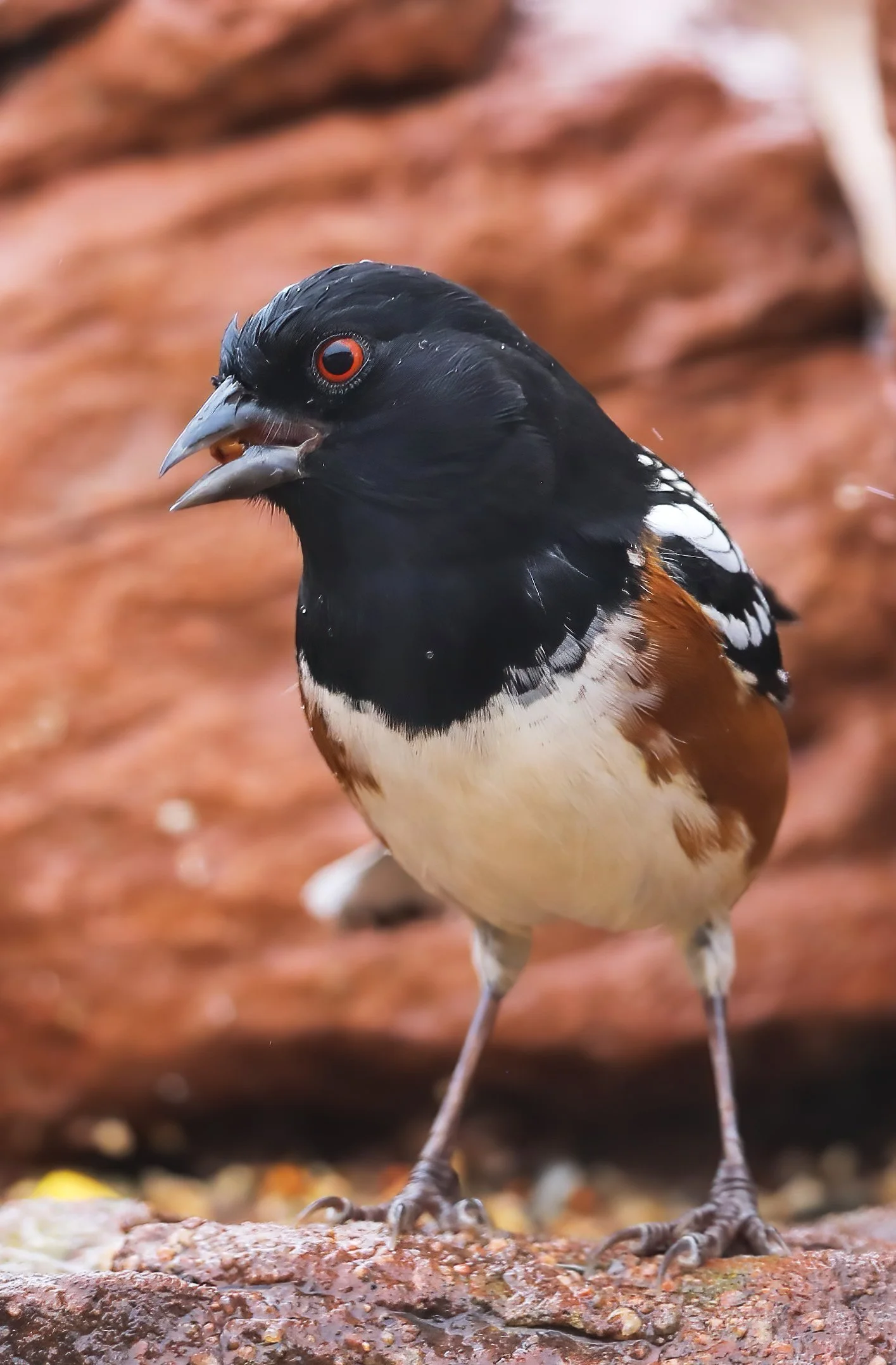with its bloodshot red eyes, this large, striking sparrow is one of my favorites at the feeding station.
Spotted Towhee (Pipilo maculatus).
with its bloodshot red eyes, this large, striking sparrow is one of my favorites at the feeding station.

Spotted Towhee (Pipilo maculatus).

as an upcoming Thanksgiving turkey, this cow carcass has been laying out on the range for only about two weeks. There are some well-fed wildlife at Round Mountain this holiday season.

reflected by clouds above the La Sal Mountains slowly expanded and flared to a vibrant display across the southeastern sky early this morning. Wow.


is developing where a small herd of muleys pays a visit to the birdbath. First come, first served.

Mule deer (Odocoileus hemionus).
with its head on a swivel, scanning for a free meal this afternoon. This is the second pass today at the fly through buffet.
Sharp-shinned Hawk (Accipiter striatus).

Note the different sized pupils, or anisocoria, due to the difference in lighting.
at the feeding stations this season is the usually melodic Western Meadowlark, though not very vocal this time of year as they are in the spring. But always dressed smartly for dinner.

Western Meadowlark (Sturnella neglecta).
in mythology and folklore, this large and intelligent bird is checking out the feeding station this sunny afternoon. Quite the handsome bird.

Common Raven (Corvus corax).

Creepy: The nictitating membrane is a transparent or translucent third eyelid, caught in the closed position over the eye in this high-speed image.
above Porcupine Rim early this morning. The final supermoon of the year.

the nearly full Moon rises next to Castleton Tower. Tomorrow night’s Full Beaver Moon will be the last of three supermoons for 2024. Enjoy.

above red rock canyon country is getting dressed for the coming winter.

for breakfast this frosty morning.

American Goldfinch (Spinus tristis).
with the Arcas model sounding rocket, seen here lifting off on a beautiful sunny morning from the driveway.

Accompanied by a cloud of smoke and a whoooosh, Arcas soars off the rod to an apogee of 488 feet on a standard “C” engine.
this young bird of prey failed to strike its intended target that fled into the saltbush. It’s using my feeding stations to hone its hunting skills and I’ve got my camera ready.

Sharp-shinned Hawk (Accipiter striatus).


is exposed in the strike valley below Castleton Tower, seen below in this geologically annotated image that includes the formation names and ages (Ma = mega annum = millions of years). The tilted beds of the Cutler Formation (right) comprise the northeastern limb of the Castle Valley salt anticline.
View toward the southeast with Adobe Mesa in the distance. (Click on image to expandify.)
Yes, it was another terrific afternoon for a bike ride in Castle Valley National Park.
in the La Sal Mountains, with snow level occurring at about 7,200 feet (~2,200 meters). It’s too early for the SNOTEL network to yield any seasonal information on snow depth and water content in the high country.

were certainly moving as bedload in this ephemeral wash below Adobe Mesa during the flash flooding events this summer. Here they now sit, shingled on top of one another, likely stranded for a decade or more until mobilized in the next extreme hydrologic event in this drainage.

As artificial as the sky and cloudscape appears in this image, it was that lovely of a day in Castle Valley.
but still enjoying munching on succulent cheatgrass.

Desert cottontail (Sylvilagus audubonii).
is being brightly expressed in Castle Valley. There’s a real chill in the air, too.

occurred above the bridge on Castleton Road during this summer’s flooding, clearly evident from examining these images taken three years apart. Compare and contrast.

THEN: Castle Creek on 17 November 2021.

NOW: Castle Creek on 31 October 2024.
across the eastern horizon during this morning’s sunrise behind Adobe Mesa, a welcome warmth following the first hard freeze of the season last night.
